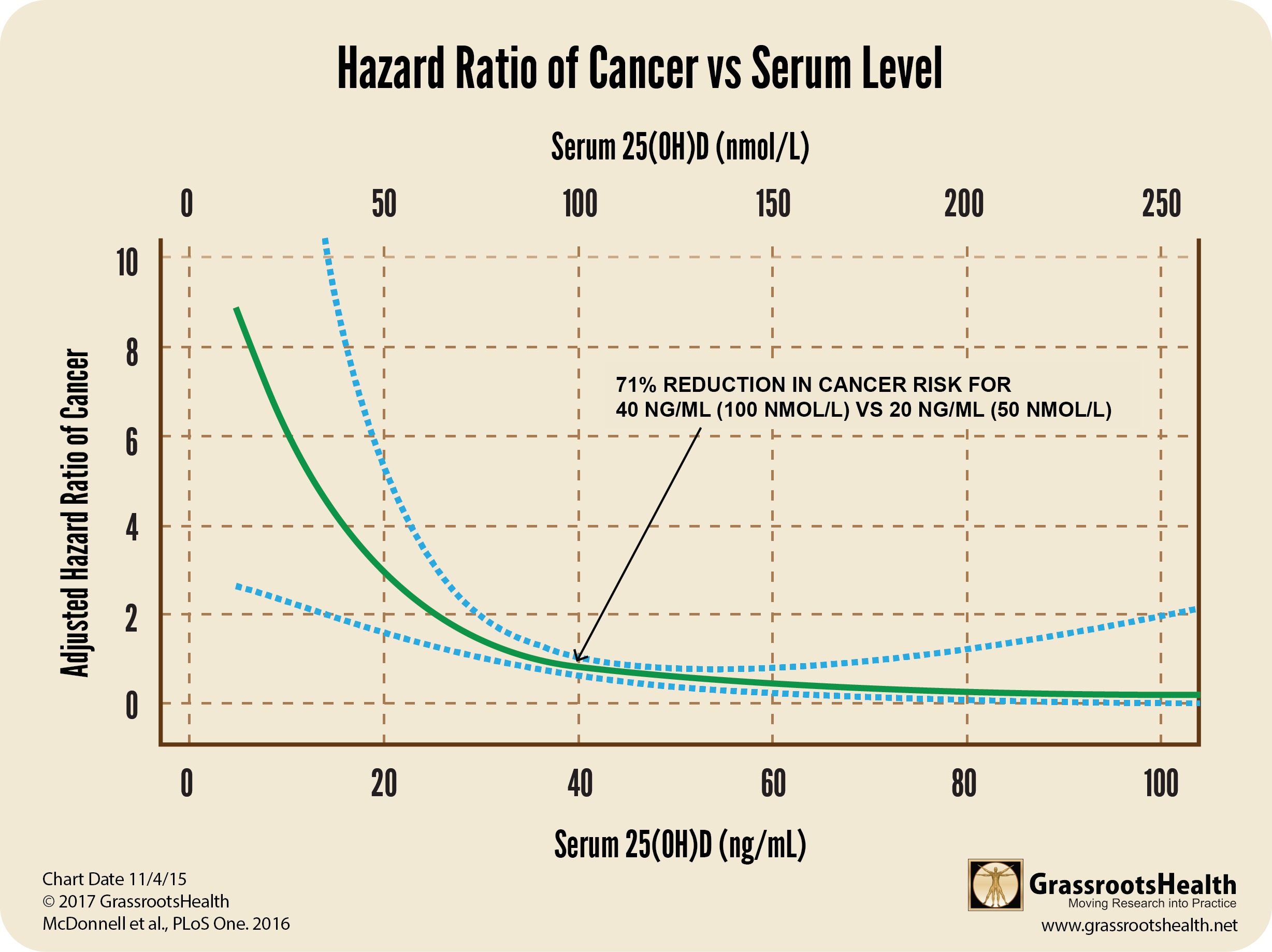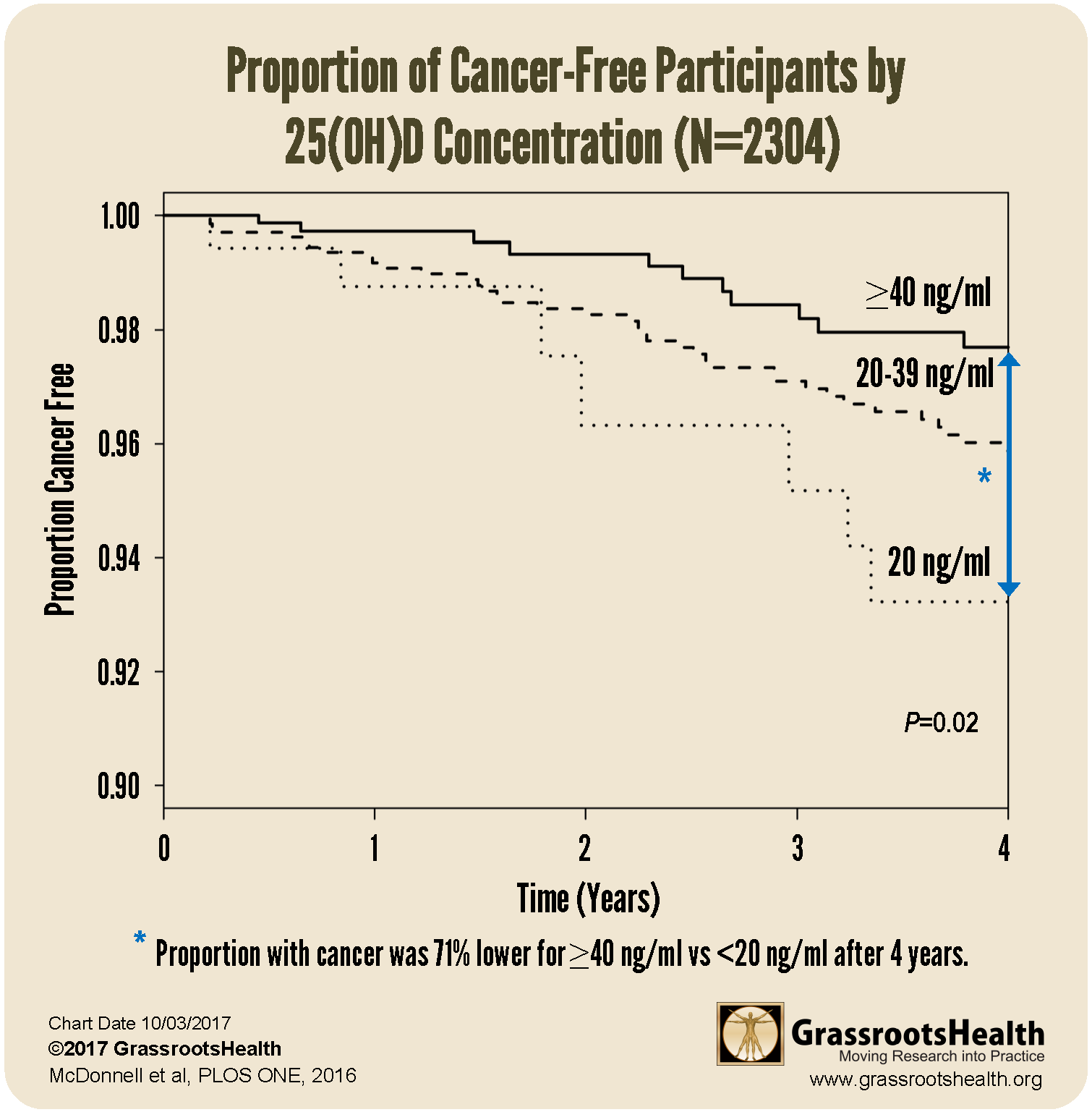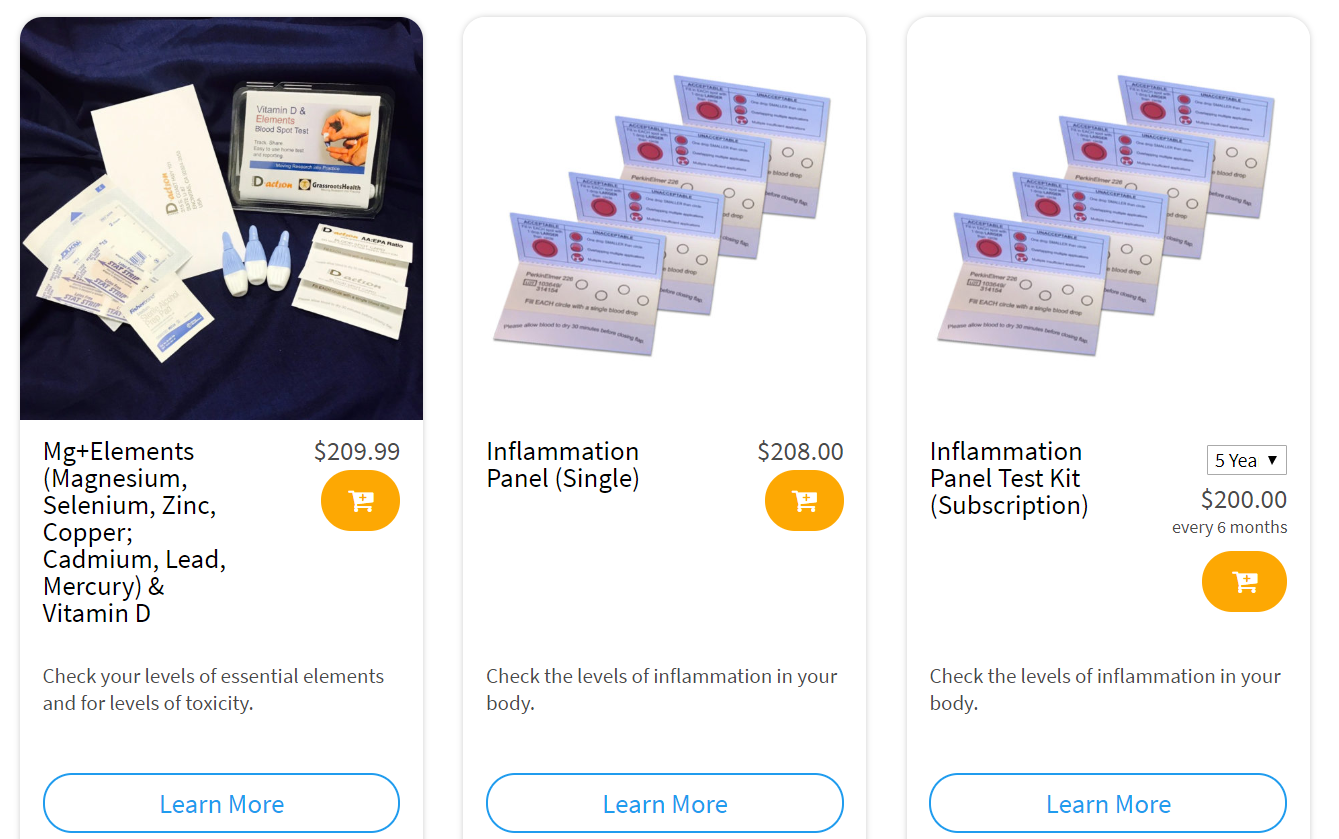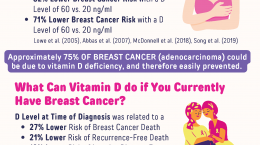Published on October 18, 2019
October is Breast Cancer Awareness Month, but here at GrassrootsHealth Nutrient Research Institute we prefer to take the opportunity each October to focus on breast cancer prevention. To help educate the public on the effects of vitamin D and breast cancer prevention, we have created a series of posts focused on key research, starting with highlights from the first randomized controlled trial published on vitamin D and cancer, and the second highlighting a study that replicated those findings, by the same author.
Please share this informational series with all you know who may have or be concerned with getting breast cancer.
71% Reduction Found Using Combined Cohort Data
 In April 2016, GrassrootsHealth partnered with leading vitamin D and cancer researchers Drs. Garland, Gorham, Heaney, and Lappe to publish Serum 25-Hydroxyvitamin D Concentrations ≥40 ng/ml Are Associated with >65% Lower Cancer Risk: Pooled Analysis of Randomized Trial and Prospective Cohort Study, a paper focused on achieved vitamin D serum levels and cancer incidence. Data was combined for women 55 and older from our GrassrootsHealth cohort (N = 1,135, median serum level = 48 ng/ml) and the cohort of a previously published randomized controlled trial (RCT) of vitamin D and calcium supplementation with respect to cancer (Lappe RCT paper; N= 1,169, median serum level = 30 ng/ml). The pooled cohort was analyzed to investigate cancer incidence over time (median = 3.9 years) for all invasive cancers combined, excluding skin cancer.
In April 2016, GrassrootsHealth partnered with leading vitamin D and cancer researchers Drs. Garland, Gorham, Heaney, and Lappe to publish Serum 25-Hydroxyvitamin D Concentrations ≥40 ng/ml Are Associated with >65% Lower Cancer Risk: Pooled Analysis of Randomized Trial and Prospective Cohort Study, a paper focused on achieved vitamin D serum levels and cancer incidence. Data was combined for women 55 and older from our GrassrootsHealth cohort (N = 1,135, median serum level = 48 ng/ml) and the cohort of a previously published randomized controlled trial (RCT) of vitamin D and calcium supplementation with respect to cancer (Lappe RCT paper; N= 1,169, median serum level = 30 ng/ml). The pooled cohort was analyzed to investigate cancer incidence over time (median = 3.9 years) for all invasive cancers combined, excluding skin cancer.
We found that women with vitamin D serum levels greater than or equal to 40 ng/ml had a 71% lower risk of cancer than women with serum levels less than 20 ng/ml. In the graph below you can see that the greatest decrease in risk occurred between about 10 – 40 ng/ml. Calcium did not have any significant effect on cancer risk in this analysis.
The green line in the chart above represents the “hazard ratio,” which is a measure of risk. This line goes down (lower risk) with higher vitamin D levels. The two dashed blue lines represent the “confidence interval” which shows the range of values that contain the true risk with 95% certainty. A narrow band indicates a more accurate estimate of the risk compared to wider bands which are often due to small sample sizes in those ranges.
This second look at the combined data uses a Kaplan Meier curve to clearly illustrate the difference between the proportions of cancer-free participants at the end of the 4 year observation period.
The lines in the chart above represent the percent of participants without cancer for each vitamin D level group. Lines that are closer to the bottom of the chart represent higher cancer incidence and lines that are closer to the top of the chart represent lower cancer incidence.
Join the Study to Help Reduce Breast Cancer Incidence
Reduce Breast Cancer NOW! is a field trial of GrassrootsHealth using our methodology for moving nutrient research into practice. This model was developed and tested over 7 years, with over 10,000 participants, through the D*action project. All women can join this project to help demonstrate the effects of vitamin D on breast cancer prevention.
Are you concerned about your vitamin D level and cancer?
Testing your vitamin D level regularly and taking steps to keep it at a target level of 40-60 ng/ml (100-150 nmol/L) is important for all stages of health. Through GrassrootsHealth Nutrient Research Institute, you can also test your omega-3 status, inflammation levels, and levels of essential nutrients and toxins. Find out your levels today! Log on to the shop (click the link below) to get your tests and see for yourself if your level can be improved.
Make sure you track your results before and after, about every 6 months!
Click Here to Access the Shop Page
How can I track my nutrient intake and levels over time?
To help you track your supplement use and nutrient levels, GrassrootsHealth has created an online tracking system called myData-myAnswers. For each specific supplement, you can track what days you take it, how much, and many other details. This will help you know your true supplemental intake and what patterns of use work for you to reach and maintain optimum nutrient levels. Check it out today!









